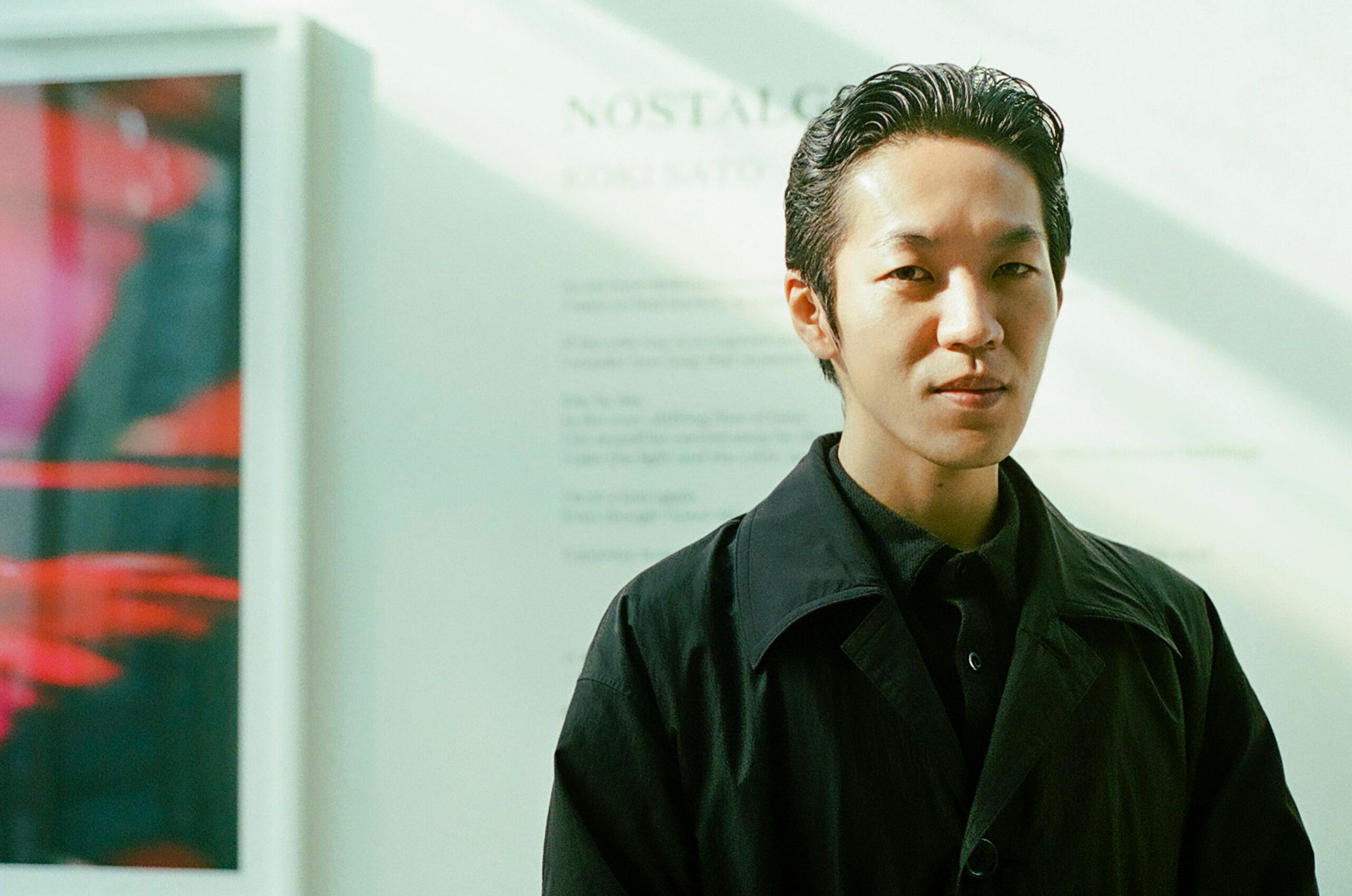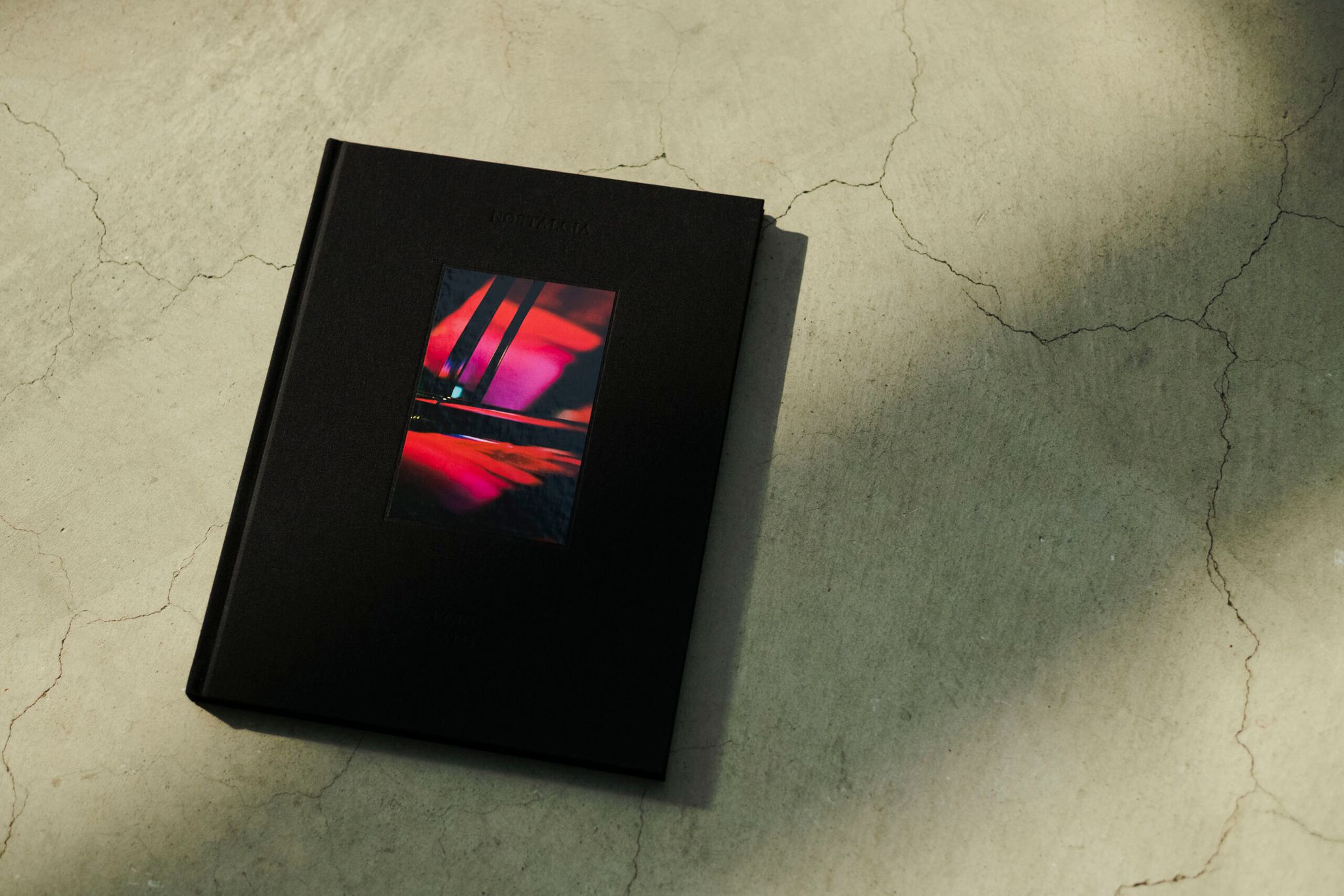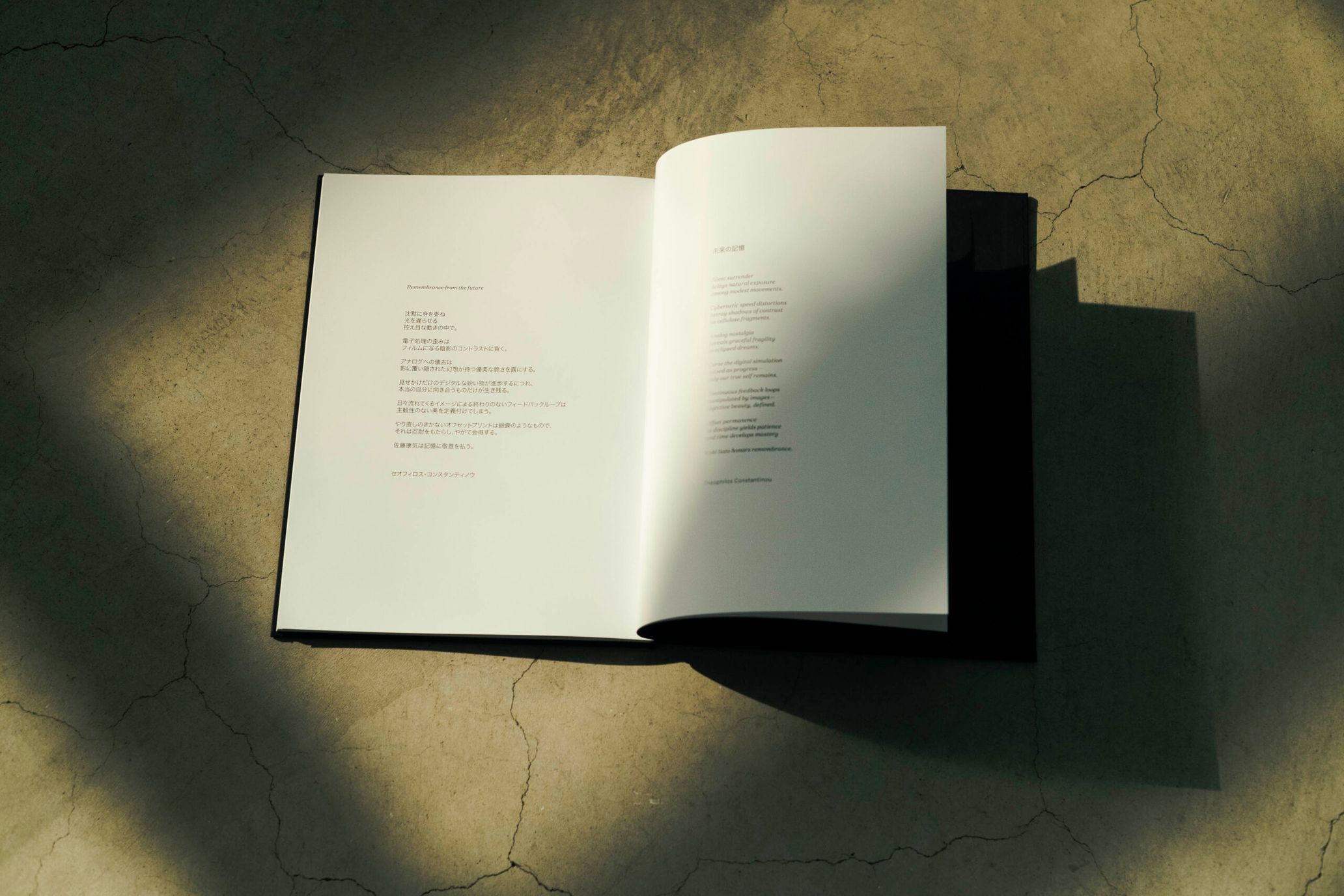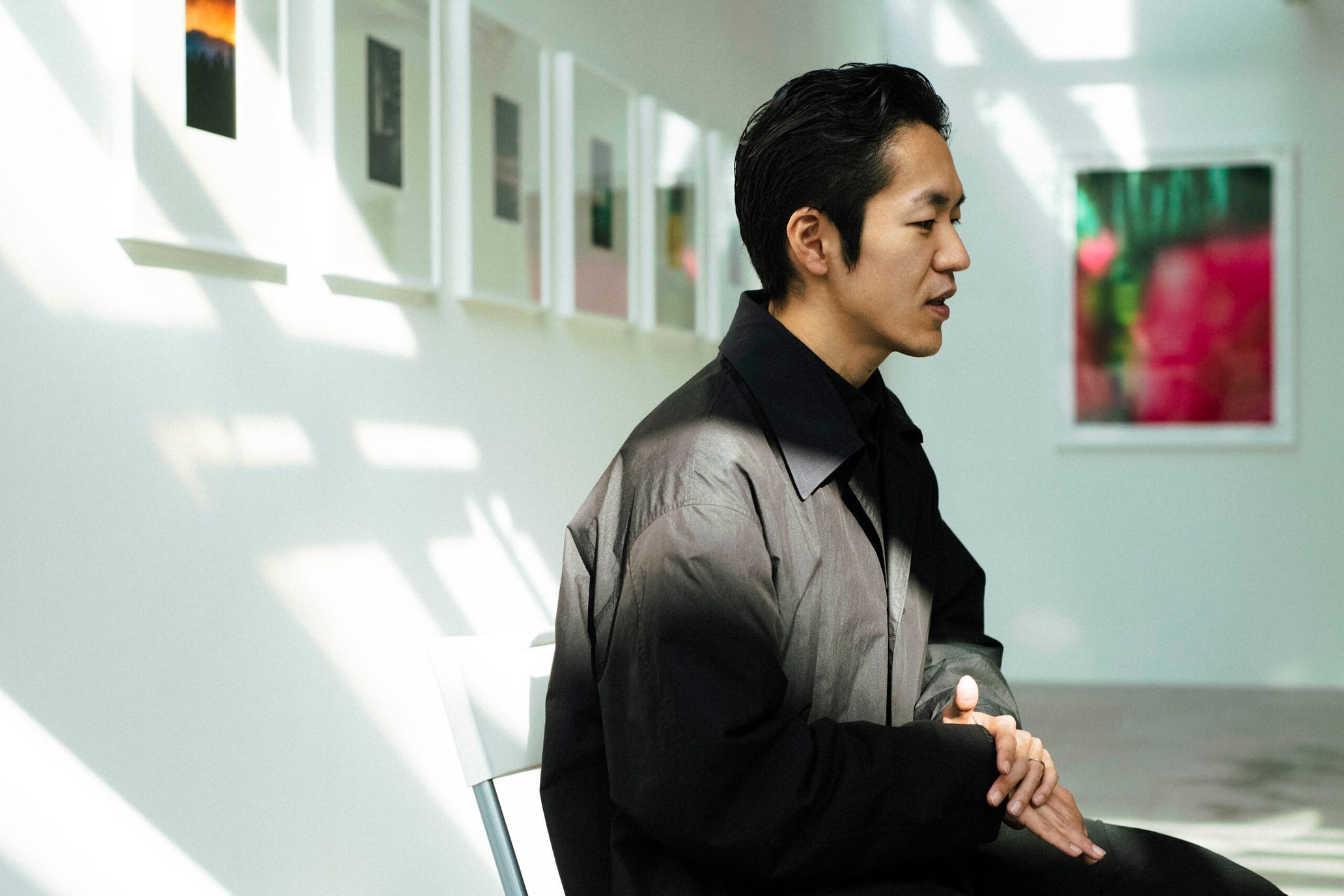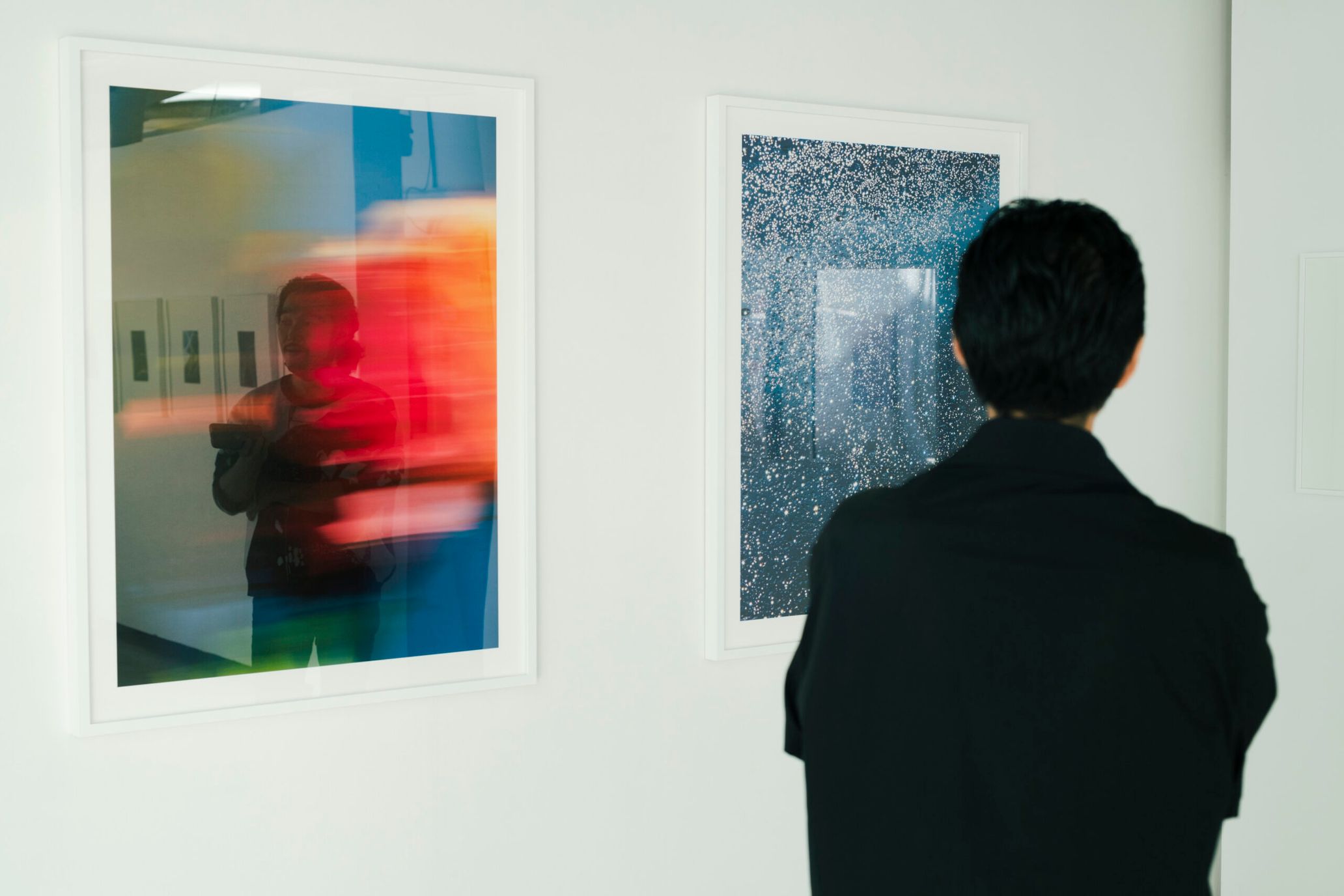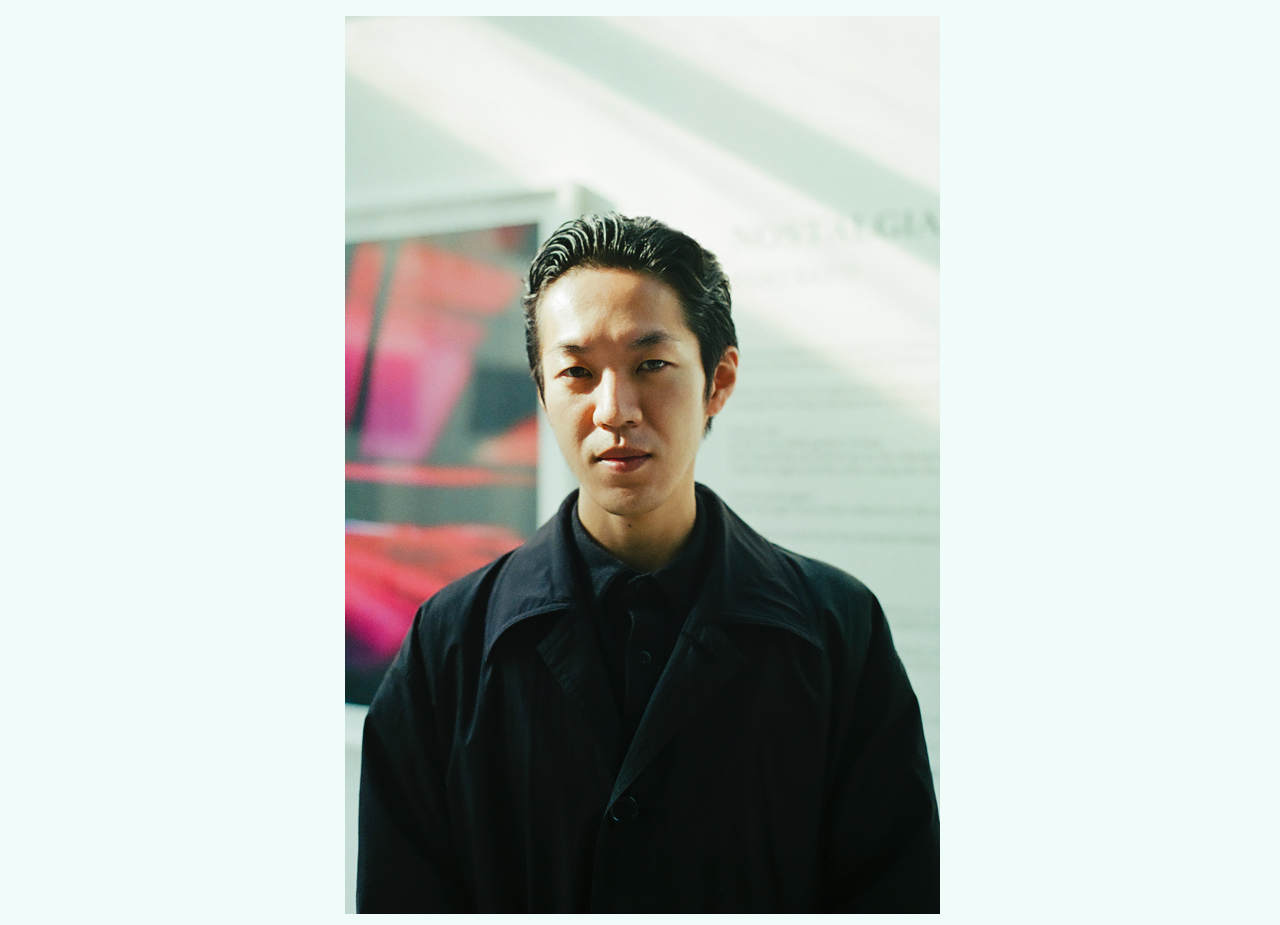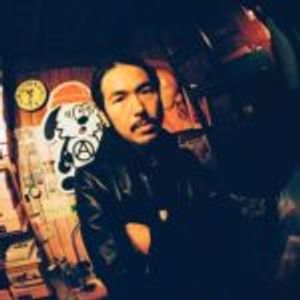Koki Sato’s a New York-based photographer. He’s had a couple of exhibitions in Tokyo in the past; in December of 2021, he launched and exhibited his photo book NOSTALGIA at THE PLUG in Shibuya. Even though there was no big announcement before the event, a massive crowd of people showed up, and the book sold out before the last day of the exhibition.
Sato’s known for his portraits of people, which I strongly associated him with, but this exhibition showed photos of landscapes, and there are no portraits in the photo book either (although some shots allude to people and shadows).
He started this project during the pandemic in New York; what did he put into it? I also asked the photographer about the roots of his photographic expression.
Creating a photo book of landscape photography in the middle of a pandemic
――You’re based in New York, but I’d like to ask you about your photo exhibition, “NOSTALGIA,” in Shibuya.
Koki Sato (Hereinafter Sato): I only showed landscape photos at the exhibition. It was the first time I didn’t have a single portrait of a person. The reason I decided to hold this exhibition had a lot to do with the making of my photo book NOSTALGIA.
――How did the photo book come about?
Sato: I worked with Paradigm Publishing (a publishing house in New York) to create this book. I met Theophilos (Constantinou), the founder of the publishing house, four or five years ago through a photographer friend of mine, and we became friends. We kept talking about making a book someday. Then one day, he decided to move his home base away from New York and said he wanted to actualize my book while he was still in town. That’s how we started working on it. That was back in 2020, right in the middle of the pandemic. I worked on it until 2021, and I continued taking photos until the last minute of the deadline.
――I get the impression that most of your photos are portraits. Why did you mainly take landscape photos for NOSTALGIA?
Sato: When Theophilos saw my photos, he told me, “Your portraits are great, but I’m drawn to your landscape photos more.” I think he found the colors, composition, and details of the landscapes that I, a Japanese person, took of New York intriguing. I was elated that he felt that way, so I started thinking about making the book using only landscape photos. Inevitably, I couldn’t meet up with people anymore because of the pandemic, but that wasn’t the only reason the subjects in my photos changed. It was instigated by Theophilos discovering the appeal of the landscape photos I took.
――What feeling grew inside you upon taking photos of landscapes?
Sato: In the first half of 2020, I had to keep working on the book at home without seeing people. Naturally, I tended to feel less motivated, but I had to remain optimistic while shooting for the book. It was a lonely battle, sure enough. Not only photographers but everyone who creates art probably felt the same way.
――Right. Everyone had to deal with changes in their environment provoked by the pandemic.
Sato: Through this loneliness and inner conflict, what fueled me more than anything was having hope for the future. Last year, I felt cornered mentally and in terms of my daily life, but that feeling of “I’m not going to let this take me out” was a major driving force behind taking photos.
――The title, NOSTALGIA, can be translated into Japanese as “The state of yearning for the past.” Is there nostalgia behind the book?
Sato: The title NOSTALGIA doesn’t refer to my current feelings of nostalgia, but rather the feeling my future self will have when reflecting on the past. I feel like this work is one example of how I’ll continue taking photos and building my career while staying positive. I’m sure that my current feelings will seem very nostalgic for my future self. If I don’t keep taking photos, I wouldn’t be able to look back on the past down the line, regardless of the times. You can say the title reflects my determination.
Showing a new approach by using light as a theme
――Could you explain some of the backstories of the photos at the exhibition?
Sato: This photo of Manhattan’s landscape plays a vital part. I was thinking about what to create in my surrounding environment when covid hit, and I suddenly thought of going to the rooftop of my house. I took this picture right as the sun went down, and it helped me a lot mentally. It’s an obvious thing, but it reminded me of something basic; the sun rises and sets every day as usual. When I took the picture, I thought it could be interesting to document it every day, so I made it a routine to take a picture from my rooftop every day as the sun was setting.
――So, you started taking photos of Manhattan from that point on?
Sato: Yes. But after about two weeks of taking photos, I wondered what the point of the concept was. I asked my wife if there was any point in doing it every day, and she said, “If you keep taking photos, you might get the opportunity to show them someday. Think of it as a symbol of hope for our family and keep at it.” It made me feel like I should continue doing it because someone dear to me said that. I have strong feelings about this shot because it saved me. After taking this photo, it made me believe I could take photos to express what I want, even if they’re not taken in extraordinary situations, and that I could challenge myself to do something bigger through photography.
――If you had to pick another photo that left an impression on you, which would you pick?
Sato: If I had to pick one, it’d be this photo of a window with raindrops after it rained. Like the Manhattan photo, I also took this photo using a “fixed point observation” method. It’s like there was a water series and a sunset series at the exhibition, and the theme of light is what they had in common. I started these two series to take photos with a concept during covid. So, they left a deep impression on me.
――I’d like to know how you started photography.
Sato: My origins lie in majoring in photography at Tokyo Polytechnic University. It’s embarrassing to say this now, but I decided to pursue photography after watching the film City of God back in high school.
――The protagonist of City of God is a photographer, isn’t he?
Sato: That’s right. I admired that. I wanted to have a creative job in the future and thought it would be fun to use the means of photography.
――When did you move your home base to New York?
Sato: When I was 20, I went to New York to visit my cousin who lived there. When I got out of the cab at 47th and Broadway after arriving in Manhattan from JFK Airport, I was shocked at the cityscape I saw. I still remember that feeling, and I knew I wanted to live there (New York) right away. I officially moved there in 2009.
――You still live and work in New York today; are you planning on staying there in the future?
Sato: In the beginning, I never would’ve thought I’d be living in New York for this long. I was born in Tokyo, so it felt like I was based in Tokyo and would visit New York. That reversed the more time I spent in New York and built the foundation of my life there. Now I feel like I’m visiting Tokyo from New York. I can’t complete my work just by myself; I can do what I do today thanks to people who understand my personality and support what I do. As long as I have friends I can trust, I want to do different things with them and continue working in New York as long as possible.
At the core is the undeniable appeal of the city
――I see. This is a bit off-topic from your exhibition, “NOSTALGIA,” but could you talk about your origins and style of photography? In 2015, you held an exhibition featuring photos of We Live This, a dance crew, in New York.
Sato: Yes. I started dancing when I was in high school, and then I started learning about music and the culture surrounding hip-hop and house music. It was like We Live This dancing on the subway was an extension of taking photos of what I admired and liked. Fundamentally, I think one of the reasons for being in the city is to treat it as a stage. Whether it’s Tokyo or New York, the city’s very appealing to me, and I constantly want to interact with the people and landscape I encounter.
――Is there anything you’d like to express or create post-exhibition?
Sato: Many people appreciated the landscape photos in the book, so it’s become one of the things I want to continue doing. I always get so much good energy from taking portraits, so I’ll continue doing it.
I’m documenting a skate crew in the Bronx right now. I’ve been doing this for around two years, and I’ve accumulated a lot of photos. I’m not sure if it’ll be a photo book or a zine, but I’d like to actualize it.
As for my future aspirations, I’d like to improve the quality of my work. More specifically, I want to improve my framing and printing skills. I believe photography is all about how much you actively take photos, but I also want to be more committed to the process of manifesting them.
――You don’t want to express yourself through other mediums?
Sato: Not for now. The beauty of photography lies in how you can express something in a single image. Moving images can only be complete when there’s a continuity and connection between the sequences. But with photography, the viewer can envision and feel the story before and after one shot. I want to delve deeper into photographic expression precisely because there’s something romantic about that.
Koki Sato
Koki Sato’s a photographer who’s been based in New York since 2009. In 2016, he released the photo book 99¢CITY, and in 2019, he released fragile. In November 2021, Sato launched and exhibited his photo book NOSTALGIA at Mast Books in New York. Later in Tokyo, he held a launch and exhibition for the same book at THE PLUG.
Instagram:@kokisa10
https://paradigmpublishing.co/products/nostalgia-koki-sato
Photography Yuta Kato
Translation Lena Grace Suda

